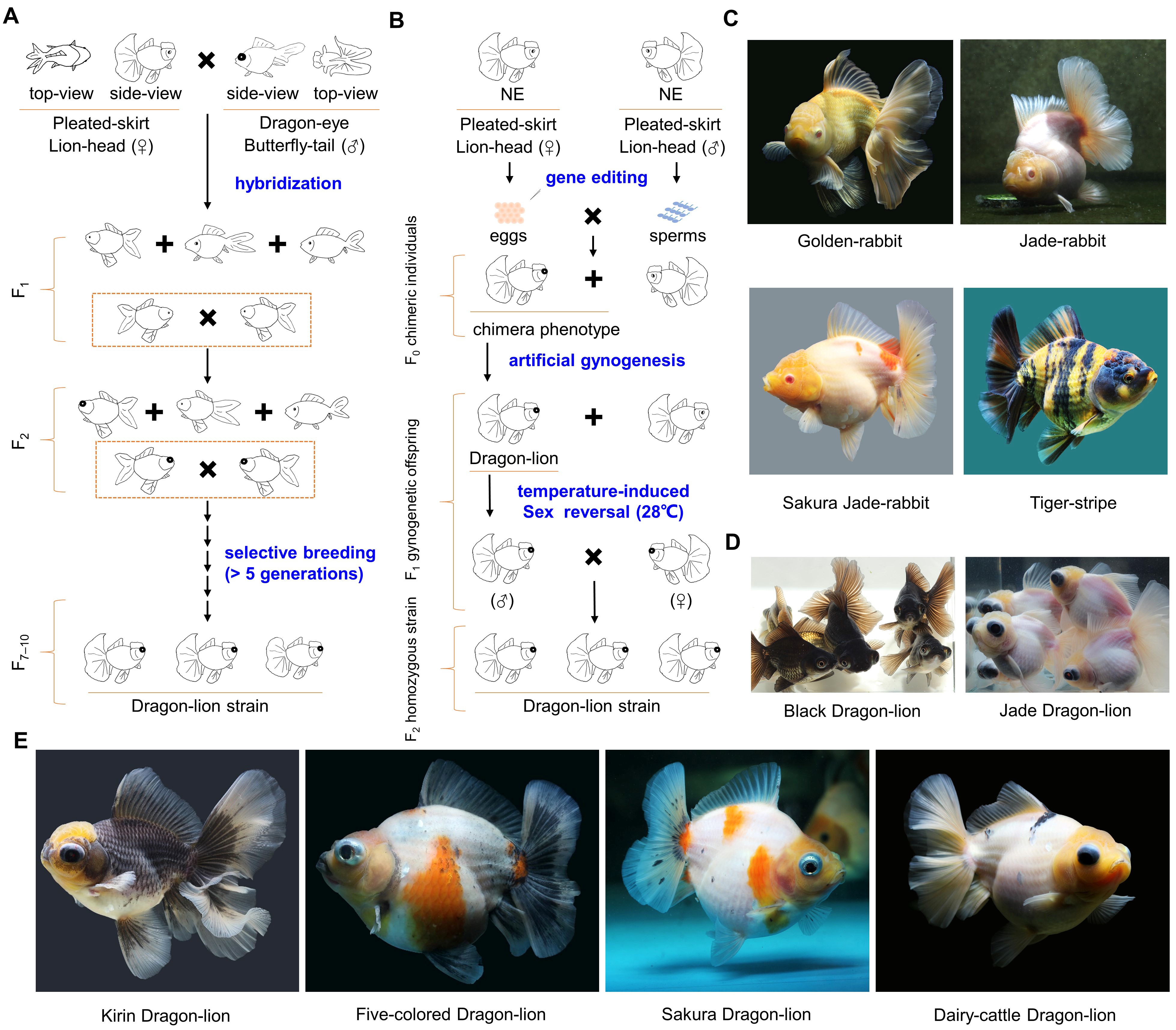Highlights
Researchers Identify Causal Gene of Dragon-eye and Albino Phenotypes of Goldfish
Due to their diverse morphological and color variations, goldfish (Carassius auratus) have long captivated evolutionary biologists and geneticists. Recent studies on genome-wide association have offered a hint to uncover the genomic basis underlying these phenotypic variations, but the causality between phenotypic and genotypic variations have not yet been confirmed.
Goldfish possess diverse phenotypes with variation in body shape, coloration, eyes, fins, hoods, and other features. Coupling these ornamental characters can breed more strains with higher ornamental value. However, the past conventional breeding strategy not only takes a long time, but also has poor stability of offspring with low conformity rate.
Recently, a research group led by Prof. GUI Jianfang from the Institute of Hydrobiology (IHB) of the Chinese Academy of Sciences identified the causal gene of dragon-eye and albino phenotypes of goldfish and developed a precise molecular design breeding biotechnology. The study was published in Science China Life Sciences.
The researchers conquered the high-efficiency breeding technology through improved raising conditions which include a nutritious diet, filtered water, adequate light, sufficient oxygen, and low fish density. By these measures, goldfish can spawn at approximately four months post-fertilization and are able to spawn again every four to seven days with 8,862 ± 3,951 eggs per time and approximately 40 times in all year around.
The researchers then developed a rapid biotechnology approach to construct homozygous goldfish knockout strains, and confirmed that lrp2aB and two oca2 homeologs were indeed the causal genes associated with dragon-eye and albino phenotypes, respectively. They also found that the subfunctionalization of oca2A and oca2B lead to differential melanogenesis in the body surface and pupils of goldfish.
Besides, the researchers developed a precise molecular design breeding biotechnology through combining the high-efficiency breeding, optimized gene editing, artificial gynogenesis, and temperature-induced sex reversal. By this breeding technology, they accurately coupled the dragon-eye and albino traits into the Pleated-skirt Lion-head goldfish, and rapidly bred more than ten stable new goldfish strains with higher ornamental value within eight months.
These breakthroughs make goldfish become a model organism for studying gene functions comparable to zebrafish. The new breeding biotechnology will not only accelerate the healthy development of goldfish industry, but also lay the foundation for ornamental and aquaculture fish precise molecular design breeding.

Flowchart and establishment of ten novel goldfish strains (Image by IHB)
(Editor: MA Yun)